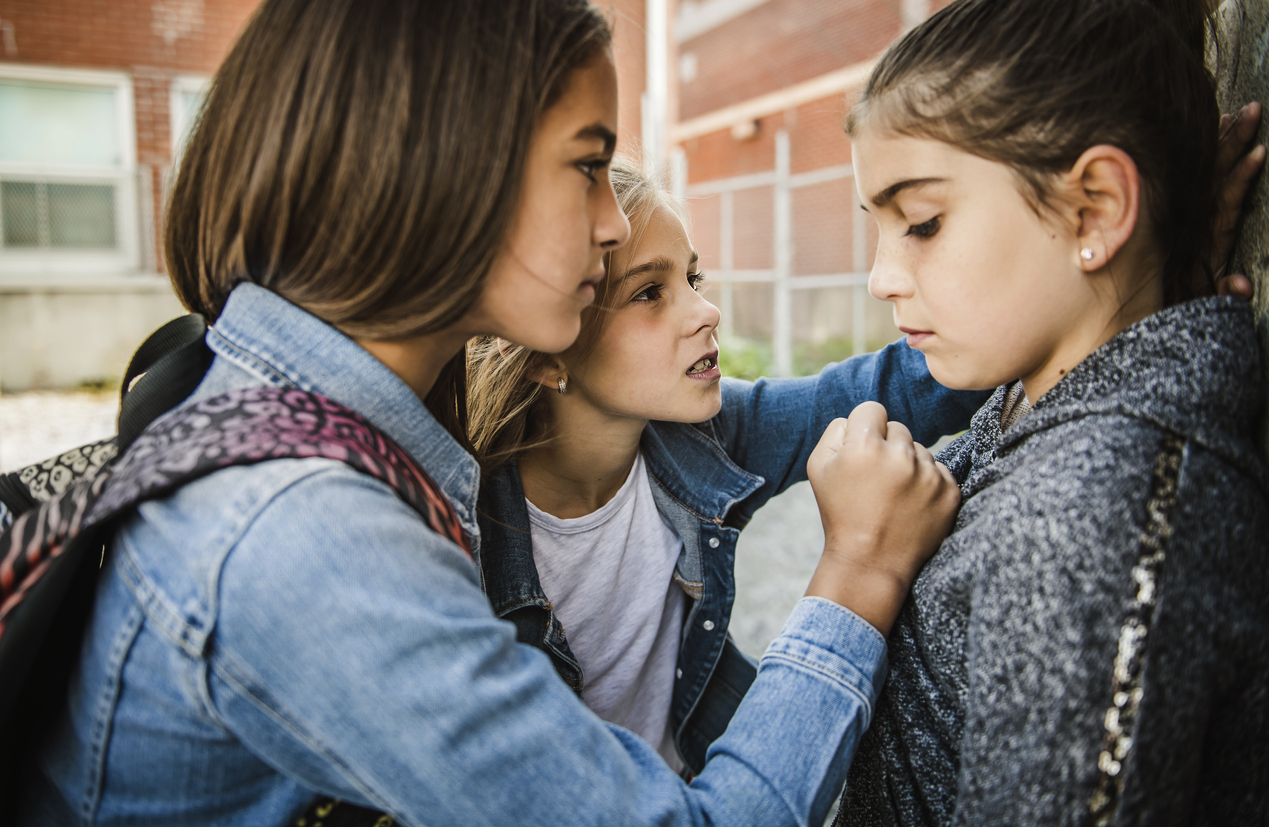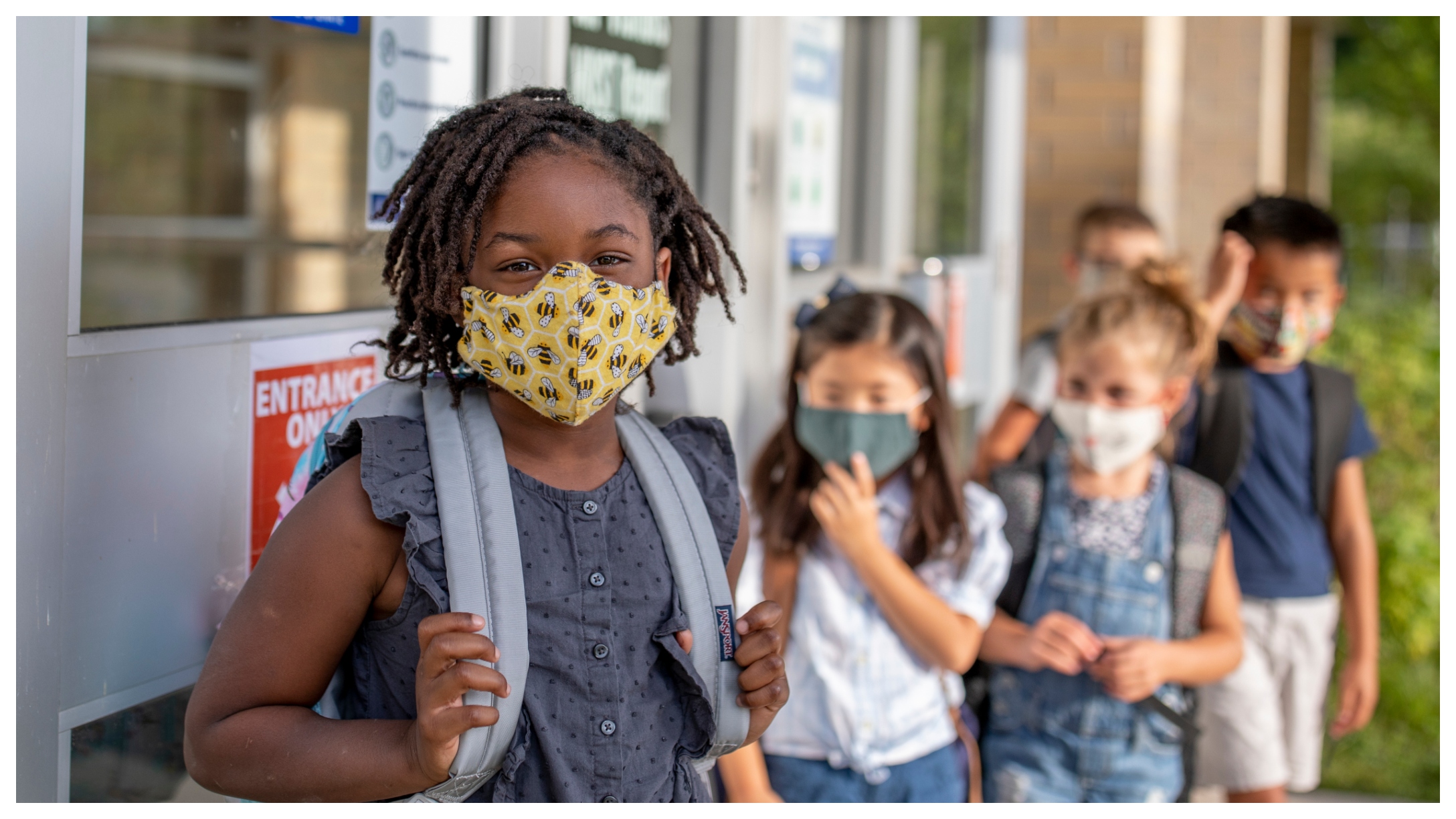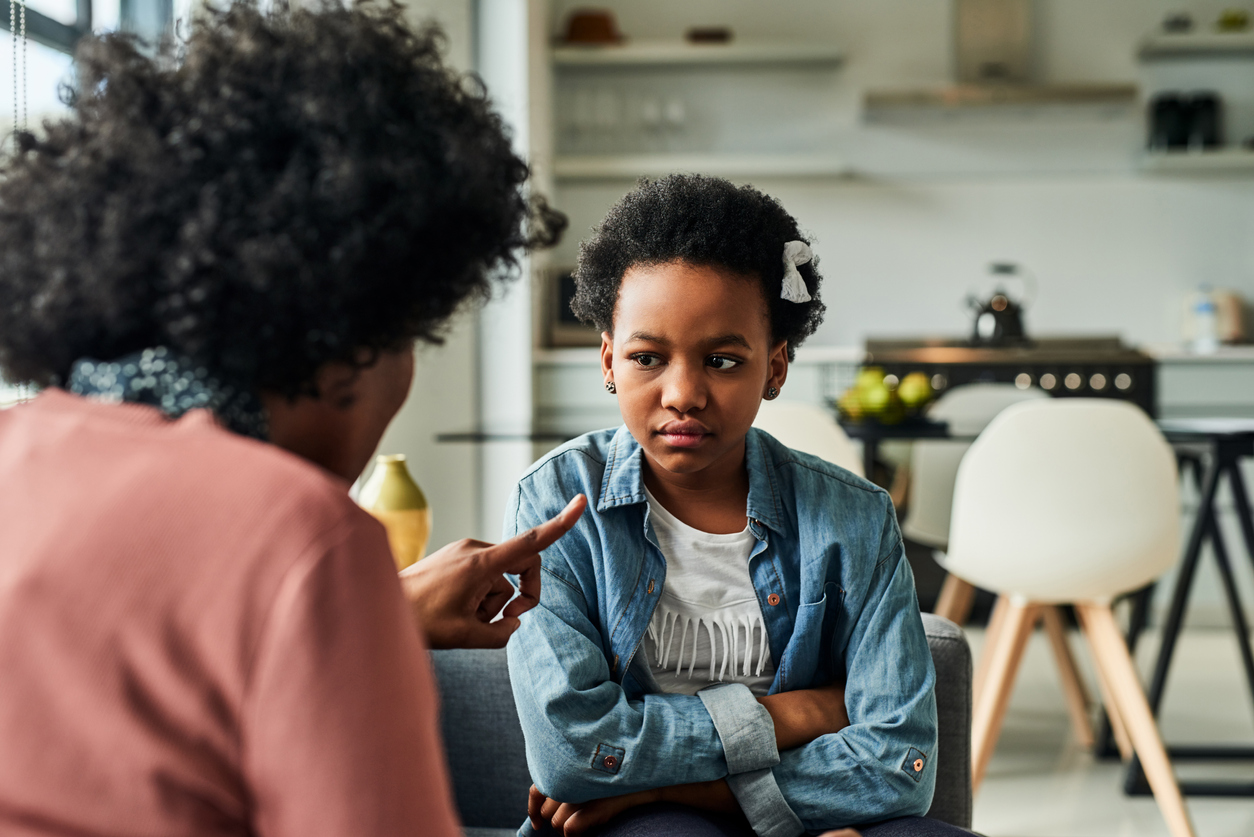
Our hearts break every time we see a story about a bullied child. As parents, we want to know how to identify if our child is silently suffering from bullying, how to raise kind kids, and how to forge open communication with our kids.
StopBullying.gov states, “No single factor puts a child at risk of being bullied or bullying others. Bullying can happen anywhere — cities, suburbs, or rural towns. Depending on the environment, some groups — such as lesbian, gay, bisexual, transgender or questioning (LGBTQ) youth, youth with disabilities, and socially isolated youth — may be at an increased risk of being bullied. Stigma can also spread false and harmful information that can lead to increasing rates of bullying, harassment, and hate crimes against certain groups of people.”
Children who tend to be more at risk of being bullied, according to StopBullying.gov, include those who are perceived as being different from their peers, are depressed or anxious, and are less popular. The site also notes that children who may be more likely to bully others are those who are well-connected to their peers and have social power, have less parental involvement at home, are easily frustrated or aggressive, and have friends who bully others.
When it comes to bullying, it’s not about size; it’s about power. “The power imbalance can come from a number of sources — popularity, strength, cognitive ability — and children who bully may have more than one of these characteristics,” states StopBullying.gov.
LittleThings spoke with experts to learn how parents can help end bullying.
“As a parent, you might pick up on signs that things aren't right before your child comes to you,” says Heather Nardi, founder of Empath Mama and an author, speaker, and coach.
“One of the most important signs that something might be amiss with your child is a change in their behavior at home or school. Do they seem afraid or anxious for no discernable reason? Are they complaining of stomachaches or headaches, or otherwise exhibiting signs of stress? Have their sleeping habits changed suddenly? All of these could be indicators that something is off at school, and you may need to get more involved in finding out what’s going on.”

Nardi notes, “Although physical bullying is most apparent, it’s important to remember that verbal and emotional bullying are just as common and damaging. Physical bullying is any physical action that frightens or injures another person, including pushing, kicking, hitting, tripping, etc. These actions cause physical harm to the victim.”
She further breaks it down:
“Emotional bullying involves manipulating another person’s emotions through threatening them with exclusion or spreading rumors,” explains Nardi. “It can also include using technology — texting or social media — to bully someone. Emotional bullying happens when someone makes fun of another person’s appearance, race, religion, or sexuality. It can also include name calling and saying mean things about someone’s family members. It may be more challenging to recognize because it often happens in private conversations instead of in public settings like school hallways.”
“Verbal bullying involves using words to intimidate another person, including name calling or other hurtful words,” informs Nardi. “It can also be as simple as teasing someone about something they can’t control, like their hair color. It is important to be proactive in combating bullying. We must challenge our assumptions about the causes of bullying and try new solutions for dealing with it. Only then can we tackle the problem of bullying in our schools.”
Nina Meehan, a creativity expert, adds, “Childhood bullying is happening at an incredibly high rate both in school and, for slightly older kids, extended to the online world. At home, find ways for the child to express what they are feeling and thinking without putting pressure on them to ‘tell you what's happening,’ because the child might not be able to emotionally or have the words to be able to communicate what's happening. Use creative activities, like painting or drawing, getting physical with free dancing, or allowing a child to select specific music to play can help release some of what is trapped inside.”
Meehan also notes, “Other children will respond to storytelling — can you tell them a story about a time that you were bullied or treated unfairly? Giving kids a safe space to express themselves at home using their preferred type of communication, which is often creative or imaginative can supplement the professional help and help establish connection with the parent.”
Heather Nardi shares a few more pointers for parents:
1. Stay Calm
“It can be upsetting to hear about bullying, especially if it is happening to your own child,” warns Nardi. “However, if you express too much anger or worry, your child may not want to tell you about something that’s bothering them next time.”
2. Listen Carefully

“Your child might not use the word ‘bullying,’ but pay attention if they complain about problems with a classmate or group of classmates,” says Nardi. “Let your child know that they are being heard by repeating what you understand and asking if it’s right. This will show them that you listen and understand their situation. It also helps clarify the issue to think more clearly about what happened and what they might do in the future.”
3. Talk With Your Child

“Let them know that you’re there to help and that they don’t have to go through this alone,” suggests Nardi. “Ask your child if they have talked with a teacher or counselor at school about the bullying and whether they want you to speak with anyone at school about it. If so, contact the school and ask for a meeting with the counselor, teacher, or principal — whomever your child feels most comfortable talking with about this issue.”
Former Olympian and mom of four Samantha Clayton has dealt with bullying firsthand. She shares with us, “My daughters experienced bullying in middle school, and I found that the parent of the child was also a bully and was encouraging and fueling the situation. Dealing with her as an adult through school administration put an end to it immediately. Be an advocate for your child as they need you to defend them, speak on their behalf, and demand that schools tackle the issue with the parents. Growing up through the teen and tween years is a delicate journey, and it must be managed with care and consequences. Teen suicide rates are so high, so parents must be on full alert at all times to recognize the signs of bullying.”
Clayton adds, “Parents can help to end bullying by teaching their own kids about boundaries, communication, and the importance of being kind. Prevention starts at home. Teaching your kids about how not to be a bully as well as letting them know what to do if someone is bullying them are, in my opinion, the most important steps parents can take to prevent bully culture. Kids need to understand early in their preschool days what bullying is and be taught the power that their words and actions have on others — both good and bad. It's valuable to clearly articulate the facts of bullying and continually reinforce that narrative through conversations and age-appropriate story telling.”
She offers her tips for parents:
1. Have a Zero-Tolerance Policy at Home
“Make a list of 'bully things' on the fridge for younger kids to learn what not to do,” advises Clayton. “Do not call names. Do not purposely make others sad. Do not push or hit others. Use simple language, and then have a list of ways to be kind. For young kids, it is a great way to lay a solid foundation of expected behavior.”
2. Start Early With Not Allowing Prank- and Joke-Type Behavior at Home
“If a joke is aimed at making someone feel inferior, stupid, or to create a 'laugh at — not a laugh with me' vibe, discourage it, because bullying often starts as people joking and making simple fun — not realizing that it can be harmful and lead to a bad situation,” says Clayton.
3. Teach Your Kids How to Help Others Who Are the Target of a Bully
“Teach them to be a good friend and to speak up and say something if they see something,” encourages Samantha Clayton. “Bullying can be stopped if we teach all kids to speak up.”
With all of this said, former high school health educator Aimee Nicotera, MS, tells us, “It is also important to instill healthy self-esteem in your child. Praise when appropriate, and also teach them how to learn from mistakes. Kids also need to be taught how to be assertive, firm but friendly. Teach them to stick up for themselves and verbalize their feelings. Give them an arsenal of phrases they can use, including ‘Stop that,’ ‘I don’t care what you think,’ ‘Stop talking to me like that,’ or simply ‘It’s my turn now.’ Also give them strategies to get out of situations. For example, walking away or acknowledging what they are being teased about, or whatever you feel is appropriate. Learning to make eye contact is also important.”
She acknowledges, “Teaching good social skills can be hard. Taking turns, sharing, being kind, and acting safe and responsibly are skills that take time to master. As a parent, it can be difficult to teach these concepts, while at the same time teaching your child to assert themselves. Keeping the lines of communication open will help. Continually talking to your child about their day, asking open-ended questions, drawing them out, and taking advantage of opportunities to discuss various social situations when they arise in daily life are musts.”
Nicotera also reminds parents, “Modeling appropriate behavior and positive social interactions is key in both instances. Teach your children empathy, kindness, and love. Take advantage of situations that arise in life to show and put these qualities in action. For example, opportunities may include holding the door for someone else, picking things up for someone when they drop something, or simply having a conversation about a crying child observed on the playground.”
She sums it up, “As parents, taking an honest look at how we talk about other people, how we treat others, and how we discipline our children is important. If we make fun of others, are mean to people, or display self-centered, unempathetic behavior, we shouldn’t be surprised that our kids imitate it. If we discipline in a way that uses power and fear, we may be teaching our kids that this tactic works to get what you want or can be used against peers. Using discipline strategies that are less physically and verbally aggressive, and less power-based, can teach kids not to use power against others.”
Whether during school or in the cyber world, the end of bullying can begin at home.




